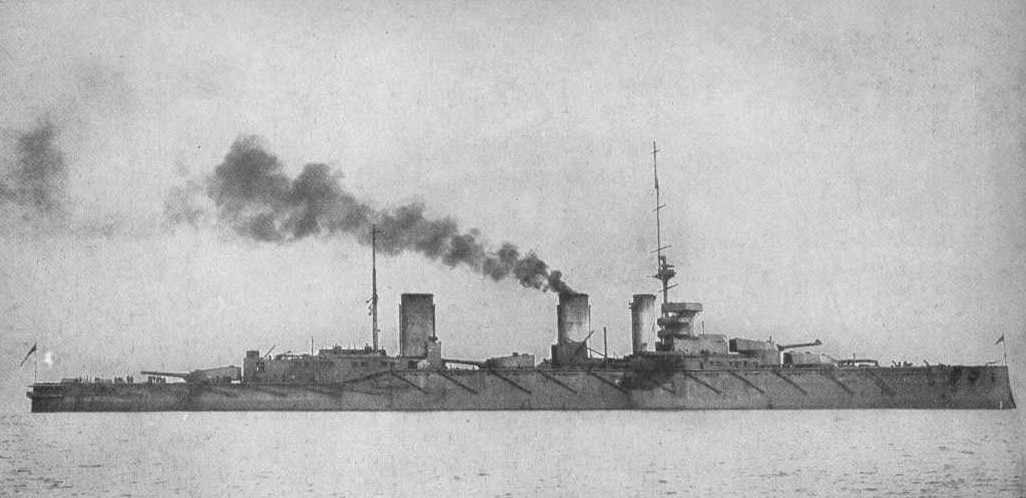Some of the best looking ships ever built, their frailties were exposed explosively at Jutland. Too big with too little armour. The 11" and 12" guns of the German ships at Jutland made pepperpots of the British Battlecruisers.
HMS Queen Mary of 1913, sunk at Jutland 1916.

With the end of the war the Admiralty was looking to divest itself of many of the older, now obsolete, ships. The two Lion class would have been kept if the Washington Treaty had given them a chance to be saved. With the Courageous class being rebuilt to aircraft carriers, ships with serious speed would be required to escort them. (Thats the real time line, RTL.)

With the setting up of the self sufficient Dominions during 1919-1920, (South Africa, Australis, New Zealand, Zealandia, Canada, depending on which AU I am in) their navies need to be set up with ships of force.
HMSAS Rhodesia (ex Lion) and HMSAS Free State (ex Princess Royal) were the remaining two Lion class battlecruisers of WW1 vintage. They were to be deleted from the Royal Navy on completion of the 2 Nelson class battleships but were transferred to Southern Africa instead. The ships acted as the scouting division of the South Atlantic Fleet untill 1936 when they were taken in hand at Simonstown Navy yard to receive the major refit that most of the older WW1 capital ships went through. New bridge superstructure, aircraft handling facilities, new secondary dual purpose armament and lesser AA weapons were all fitted along with more deck armour and a new propulsion system.

After their refit these ships were acting as part of the Indian Ocean fleet and operating with the Australis Indian Ocean Fleet in training exercises it was decided that unlike the Tiger type battlecruisers that had had the 'Q' turret replaced in X superfiring position that the two Rhodesias would not have this done and the extra space would be used for a larger boiler and engine installation. This was to raise the speed to 32+ knots so that the ships could act as flagships to the latest generation of Heavy Cruisers that were all making 32+ knots as well. With the main armament reduced to six guns , they were still able to take on the German raiders, but anything bigger would probably be a bit much for them. Where they excelled was as large escorts to the Ark Royal class carrier HMSAS Kwazulu. The 20 large AA guns with four HACS units were a great barrage weapon.
In 1942 with the start of the buildup of forces in the UK for the purpose of retaking Europe, both ships were transferred to the New York/Halifax to Liverpool route escorting the large liners that could maintain 25+ knots for the whole crossing. The extra speed of these ships was an operational requirement. If a torpedo was spotted these ships were to put themselves between the torpedo and its target. It was felt that these ships may not sink and be recoverable where the large liners were not built to withstand explosions. It was now that the anti-torpedo bulging would come into its own.


